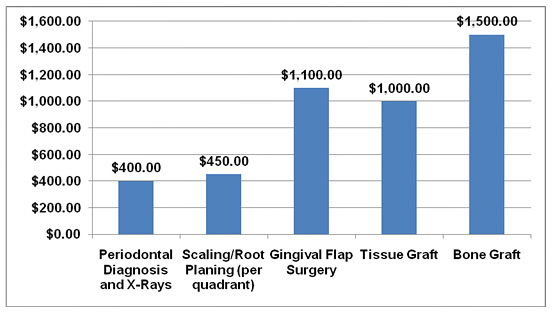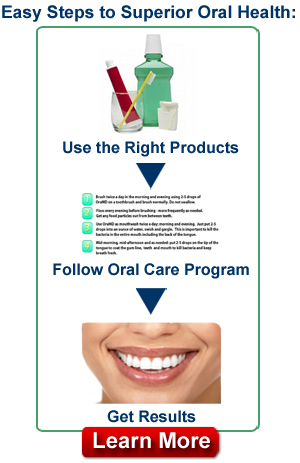CONDITIONS
- Gum Disease
- Swollen Gums
- Bad Breath
- Receding Gums
- Periodontal Disease
- Canker Sore
- Gingivitis
- Bleeding Gums
- Dry Mouth
- Periodontitis
- Tonsil Stones
- Oral Thrush
- Braces Pain
- Cheek Bites
- Denture Pain
- Gum Boils
- Gum Infection
- Gum Sores
- Loose Teeth
- Mouth Sores
- Pyorrhea
- Red Gums
- Sjogren's Syndrome
- Sore Gums
- Tooth Abscess
- Toothache
- Trench Mouth
PYORRHEA
Pyorrhea:
What it is - What causes it - What to do about it
What is Pyorrhea?
Pyorrhea refers to an advanced stage of periodontal disease. It is at this stage that the ligaments and bone that support the teeth become inflamed and infected. In most cases it is a result of gingivitis that plaque buildup infects the gums, and can drive a literal wedge between the tooth and gum line. Once these pockets form they can trap food particles that will feed bacteria that is also trapped in them. These pockets can go so deep that they can begin to erode the supporting bone structure and lead to tooth loss. In fact, bone loss from pyorrhea is the primary cause of tooth loss in adults.
CLICK BELOW TO LEARN MORE...
SIGNS
Signs of pyorrhea
Early symptoms of pyorrhea are similar to the symptoms of gingivitis, and include visible changes in the gums. The onset of the disease is marked by bleeding of the gums. As it progresses, the gums recede from the teeth, loosening of the teeth occurs, and the bone structure that supports the teeth can begin to erode. As gum pockets deepen and the jawbone recedes away from the roots of the teeth, the pockets will begin to discharge pus as their infections worsen. The condition can be made worse by increased stress, poor nutrition, poor oral hygiene, and loose or poorly fitting dentures.
Signs and symptoms to be aware of are:
- Inflammation of the gums
- Loosening of teeth
- Gum pockets
- Pus discharge from pockets
- Mouth ulcers
- Abscesses
- Receding gums
- Bone erosion
PROGRESSION
Progression of pyorrhea

DANGERS
Dangers of pyorrhea
It is estimated that 85% of the population has some form of gum disease. It has been a long held belief that periodontal disease was just a dental disease, affecting only the teeth and gums. While it's true that periodontal disease may originate in the mouth, it is now known that periodontitis is a very serious disease, affecting the entire body and increasing risk of numerous other adverse health effects. The advanced stage of pyorrhea puts those suffering from it at an even higher increased risk for things such as:
| • Increased risk of heart attack by as much as 25% | • Pancreatic cancer |
| • Increased risk of stroke by a factor of 10 | • Premature births |
| • Problems controlling both type I and type II diabetes | • Underweight newborns |
| • Respiratory disease | • Digestive disorders |
CAUSES
What causes pyorrhea?
Pyorrhea is usually a result of gingivitis, a periodontal disease that infects the gum through plaque. This leads to the formation of a pocket between the teeth that trap plaque and food particles. While primarily related to bacteria in th mouth, there are other outside causes for this condition. Things like poor eating habits, excess white bread, sugar, and red meat can contribute. Also, injuries to the gum and supporting structures from improper use of floss or toothpicks, incorrect brushing, physical and chemical irritation of mouth tissues, allergies, and even pregnancy can play parts in the origins of this disease. Some studies suggest that there are also links from chronic illnesses, glandular disorders, blood diseases, and general unhealthy lifestyles. As in most conditions, use of tobacco, alcohol, and drugs will generally make it worse.
PREVENTION
How to prevent pyorrhea
Keep in consideration that plaque can form on teeth as quickly as four hours after you brush. Since bacteria and plaque are the main causes of this condition, the best method of prevention of pyorrhea or any periodontal condition is implementing a good oral hygiene program, and staying away from the commercial products that can increase bacteria growth.
Here are some things you can do to prevent periodontal disease and pyorrhea:
| • Brush your teeth twice a day | • Don't use tobacco products |
| • Gargle twice a day • Floss every day |
• Visit the dentist routinely for a check-up and professional cleaning (recommended every 6 months) |
These measures however, are effective only above and slightly below the gum line. Once periodontal disease develops, more intensive treatments are needed.
TREATMENT
Treatment options for pyorrhea
The main goal of the treatment is to control the infection, and if possible, stop it. The road to recovery may take several months, even if it can be attained. Here are some suggestions:
- The first step is to implement a good oral hygiene program, but in most cases this will not be enough. Especially if you have pockets.
- Stopping tobacco use will help improve your chances for a successful outcome.
- Professional teeth cleaning from your dentist every 6 months.
- Your dentist may recommend a deep cleaning (root planning and scaling). This is a painful dental procedure that scrapes the plaque and tartar from above and below the gum line. Root planning gets rid of the rough spots on the tooth root where the bacteria gather.
- Use a strong bacteria fighter that can get into the pockets and kill the bacteria.
COSTS
Cost of typical pyorrhea treatments

THE ANSWER
How to Prevent Your Pyorrhea From Worsening - And Possibly Reverse the Damage - in 4 Simple Steps
The very best thing you can do in preventing pyorrhea from getting any worse is to combine a proven bacteria-fighting 4 step oral hygiene program, with a 100% pure, antibacterial oral care product. This doesn’t contain the harmful ingredients found in commercial toothpastes and mouthwash that tend to make the problem worse. Read The 6 Hidden Dangers in Toothpaste for more info.
The 4 Step Oral Hygiene Program
 |
Brush twice a day in the morning and evening using 2-5 drops of a botanical toothpaste on a toothbrush and brush normally. |
 |
Floss every evening before brushing - more frequently as needed. Get any food particles out from between teeth. |
 |
Use a botanical mouthwash twice a day: morning and evening. Just put 2-5 drops into an ounce of water, swish and gargle. This is important to kill the bacteria in the entire mouth including the back of the tongue. |
 |
Mid-morning, mid-afternoon and as needed: put 2-5 drops of natural botanicals on the tip of the tongue to coat the gum line and teeth to kill bacteria and keep breath fresh. |
What to do about your condition, starting today
As we've discussed, the most important thing to do to correct pyorrhea before it is too far gone is to implement a solid oral hygiene program. If you're already doing that and still suffering, it may very well be due to the chemical laden products you're using. Combining good oral hygiene with a natural product that will eliminate the bacteria which cause the problems may be the answer to a number of these problems.
Did it ever occur to you that the least expensive and painful option might be found in nature?

Use all products as directed.
YOUR PURCHASE IS PROCESSED ON OUR SECURED SERVER. YOUR DATA IS SAFELY ENCRYPTED AND IS SAFE FROM UNAUTHORIZED ACCESS.
*Domestic Shipping starts at only $2.95!
*International Shipping starts at $8.95... We Ship Everywhere!
Toll Free U.S. (888) 423-7500 or 01-859-277-0000 International
Questions or just want to talk to live help? Call 24 hours a day, 7 days a week.


